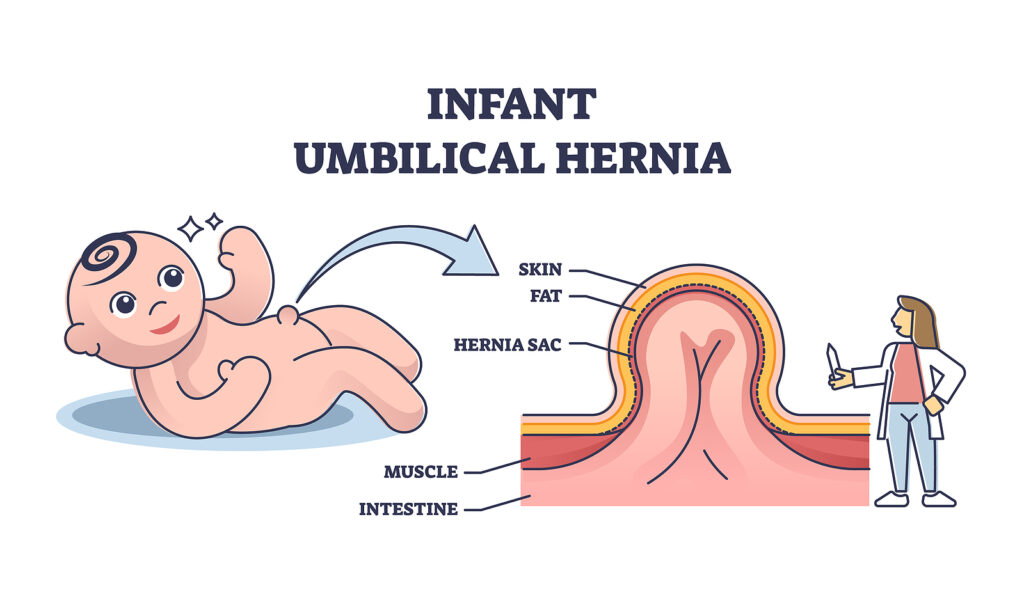By Lynda Williams, medwireNews Reporter
medwireNews: The majority of umbilical hernias (UHs) close spontaneously regardless of size, US researchers have found.
Overall, spontaneous UH closure by age 5 years was reported for 88.6% of 4486 children diagnosed at a median age of 1.6 months and who attended one of 68 primary care practices affiliated with Boston Children’s Hospital in Massachusetts, USA, before September 2022.
Spontaneous closure was defined as absence of UH mention on electronic medical records or two consecutive well-child visits without documentation of UH and no records of surgical repair, explain Shawn Rangel and co-workers from the institution in JAMA Pediatrics.
They report that the probability of spontaneous closure increased over time, from 64.3% of UHs by age 1 year increasing to 82.4% by age 3 years and 86.0% by age 4 years.
Small hernias (≤ 1 cm) were more common in the children than larger hernias (84.8 vs 15.2%) and were significantly more likely than larger hernias to have resolved without surgery by age 5 years (89.5 vs 80.1%).
Nevertheless, the investigators emphasize that “the probability of [spontaneous closure] between ages 3 and 5 years was relatively high independent of size”. Indeed, the probability of spontaneous closure by the age of 5 years for small and large hernias present in a 3-year-old child was 37.0% and 29.4%, respectively, and the probabilities were a corresponding 20.1% and 16.9% for those persistent at age 4 years.
Rangel et al describe their study as the “largest population-based analysis of spontaneous UH closure in children” and say their findings “provide new insight for primary care clinicians, surgeons, and caregivers that can better inform discussions around the timing of repair.”
The investigators acknowledge that the research is limited by the retrospective design and reliance on electronic health records but believe that the findings are “likely to be generalizable and valid.”
They therefore conclude: “Despite these limitations, the results of this analysis suggest that repair should be delayed in most children until age 5 years.”
News stories are provided by medwireNews, which is an independent medical news service provided by Springer Healthcare Ltd. © 2024 Springer Healthcare Ltd, part of the Springer Nature Group
JAMA Pediatr 2024; doi:10.1001/jamapediatrics.2024.0087

